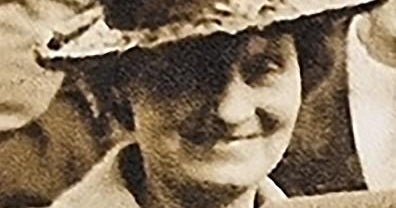Brooklyn DA moves to vacate wrongful conviction of man who spent 18 years in prison despite botched identification
Almost two decades ago, a misleading image lineup led to one man's imprisonment for murder. Now, the Brooklyn district attorney will move to vacate what a recent investigation determined was a wrongful conviction — one that law enforcement intentionally hid for years.
Sheldon Thomas, now 35, was convicted in 2004 of second-degree murder, attempted murder and other crimes after being arrested in connection with a fatal shooting in East Flatbush that killed 14-year-old Anderson Bercy and wounded another person in December 2004, said the office of Brooklyn District Attorney Eric Gonzalez in a Thursday news release announcing his decision to vacate Thomas' conviction. The district attorney will also request that the indictment against Thomas be dismissed and he be freed from prison after 18 years.
Thomas' initial arrest was based on a witness identification error, an investigation by Brooklyn's Conviction Review Unit found. The witness, according to the unit's report, had identified a different Sheldon Thomas, whose address was in the same precinct as the Sheldon Thomas eventually convicted for the crime.
Investigators "concluded that detectives were intent on arresting the defendant and used the faulty identification procedure as pretext," the district attorney's office said, noting that law enforcement agents are implicated in the report for intentionally concealing and later justifying the witness' mistake during court proceedings. Thomas was scheduled to appear in court on Thursday afternoon before Brooklyn Supreme Court Justice Matthew D'Emic, according to the district attorney.
The case "was compromised from the very start by grave errors and lack of probable cause to arrest Mr. Thomas," Gonzalez said in a statement.
"He was further deprived of his due process rights when the prosecution proceeded even after the erroneous identification came to light, making his conviction fundamentally unfair," he said.
The new investigation showed that Thomas' involvement in the initial homicide case came after a convoluted series of missteps. Detectives attempted to get his photo from a police database — he had a prior arrest for pointing an inoperable gun at officers and resisting arrest, according to Gonzalez's office — to use in an image array they planned to show the witness. However, before they received that image, they obtained a photo of the other Sheldon Thomas and placed his photo in the image array. The witness had previously identified two men, whom she knew, as being inside the car where gunfire originated during the shooting, and Thomas was not one of them.
When asked to choose a face from the police's image lineup, the witness identified the other Sheldon Thomas "as being in the car with 90 percent certainty," the district attorney's office said. But, based on that identification, detectives went to Thomas' address — not the address of the Sheldon Thomas whose photo was identified by the witness — and arrested him. Later, the same witness identified Thomas as the perpetrator in a lineup after having previously identified the other Sheldon Thomas in images. Thomas was indicted alongside two others for the 2004 shooting despite this discrepancy.
The identification of the other Sheldon Thomas in the photo array came to light in 2006, when a detective admitted on cross-examination that his previous testimony — in which he identified Thomas as the person in the photo array and said he had never seen Thomas before arresting him — was false. Another detective testified for the first time that the defendant was flagged to police through an anonymous tip given around the time of their initial investigation. That second detective "also conceded that, when questioned a few days after the murder, the defendant had told them that it wasn't him in the photo array," Gonzalez's office said.
"Despite these revelations, the judge found that there was probable cause to arrest Thomas based on 'verified information from unknown callers' and the fact that he resembled the other Thomas from the photo array," the office wrote in Thursday's announcement. Thomas was eventually convicted of second-degree murder, attempted murder and other related counts, and was sentenced to 25 years to life in prison.
Investigators determined that the witness was prompted by police detectives to identify Thomas, and noted that, despite claims by police, prosecutors, the trial judge and an appellate panel, "the Thomas in the photo array and the defendant do not look alike," Gonzalez's office said. Both Thomas and the other Sheldon Thomas are Black men. In a study commissioned by the defense, 27 of 32 law students of color who were shown the photo array with the other Sheldon Thomas concluded that Thomas was not in it.
The review of Thomas' case comes as the district attorneys in Brooklyn and Manhattan work to re-examine past convictions and move to vacate those that resulted from police misconduct and other errors either made or overlooked by the criminal justice system. The Manhattan District Attorney's office announced in November that it would vacate 188 misdemeanor convictions dating back more than 20 years because police involved in those convictions have since been convicted of crimes related to misconduct in their roles as law enforcement officers.
In Brooklyn, the district attorney's Conviction Review Unit has so far resulted in 34 convictions being vacated since 2014, according to the office. The review unit currently has about 50 open investigations.



